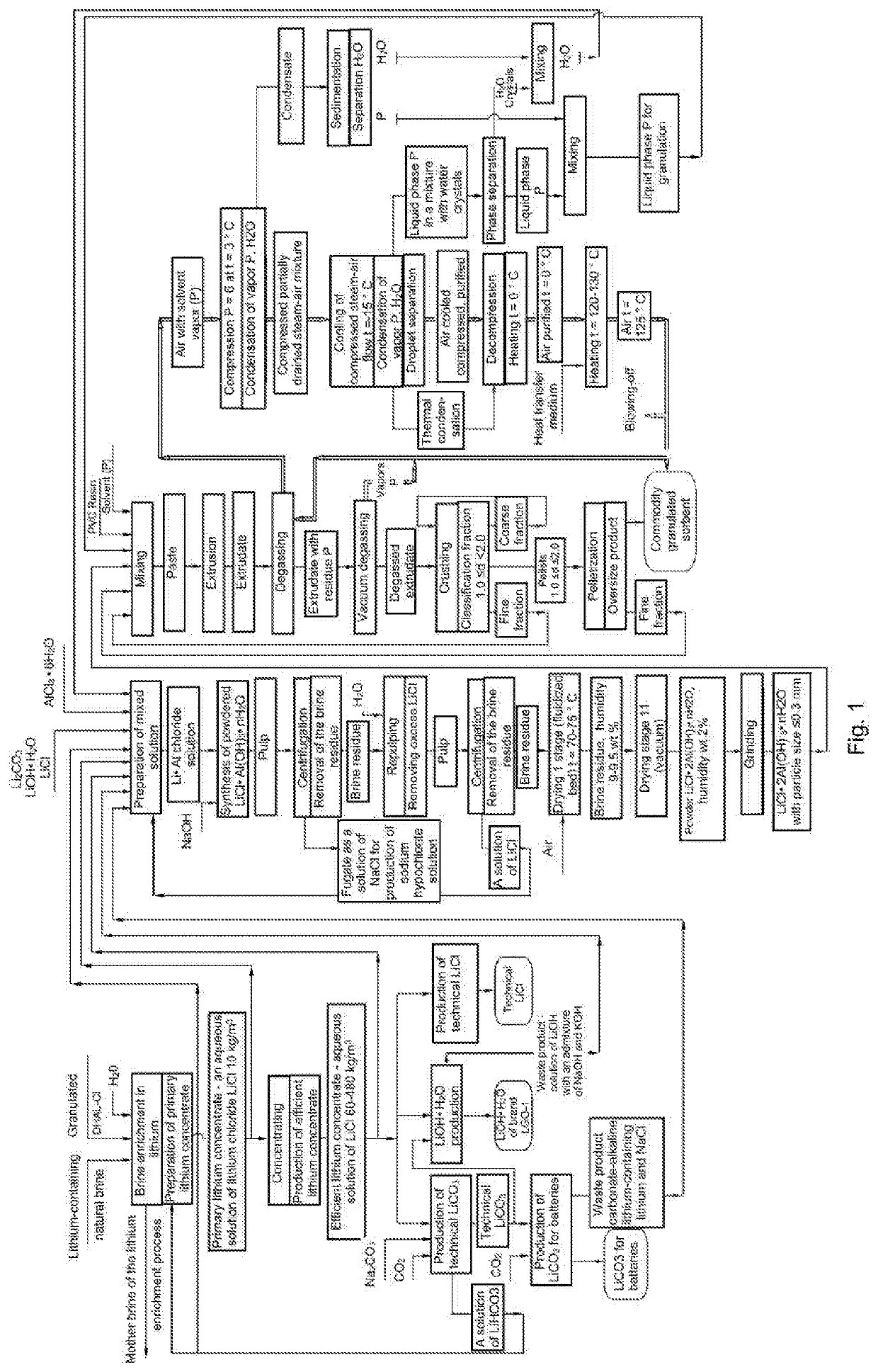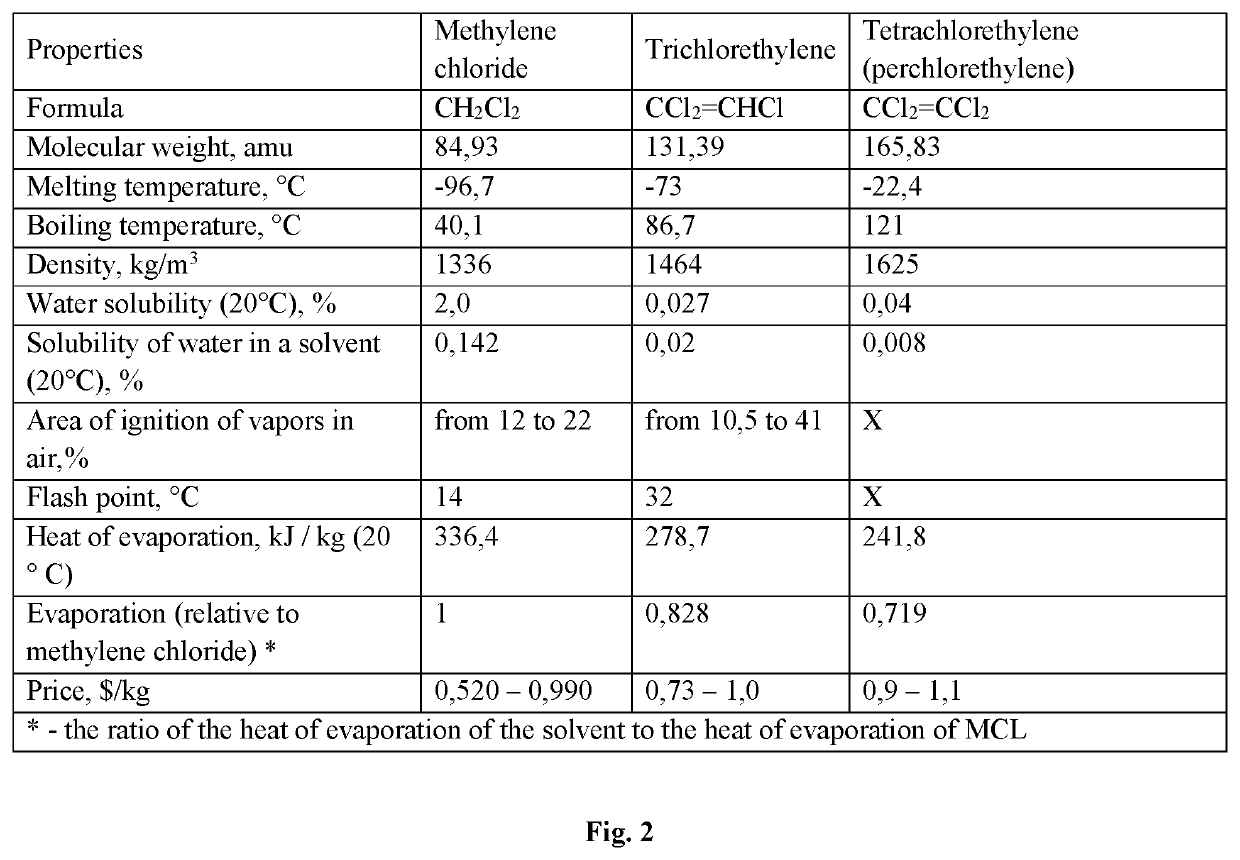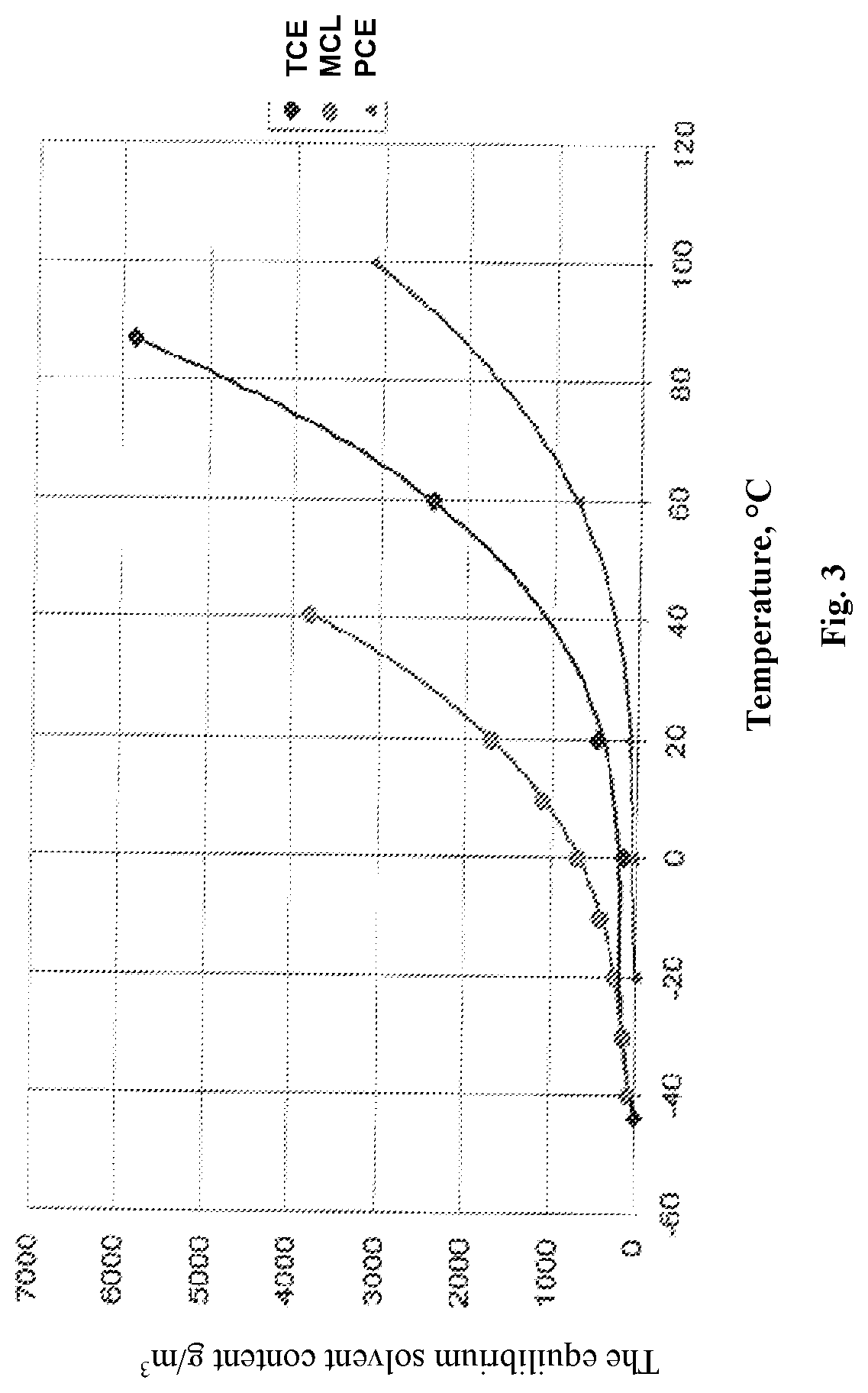Method of producing granular sorbent for extracting lithium from lithium-containing brine
a lithium-containing brine and sorbent technology, applied in the field of chemical material science, can solve the problems of long synthesis time, inability to apply, and two-stage process, and achieve the effects of reducing the production price of granular dhal-cl, reducing the consumption of lithium-containing reagents, and simplifying the system
- Summary
- Abstract
- Description
- Claims
- Application Information
AI Technical Summary
Benefits of technology
Problems solved by technology
Method used
Image
Examples
example 1
[0063]In laboratory conditions, comparative tests of the sorption-desorption properties of batches of the granulated sorbent DHAL-Cl, made from various lithium-containing materials in accordance with the process flow diagram shown in FIG. 1.
[0064]Sample No. 1 was produced using a mixed lithium aluminum-containing aqueous chloride solution obtained by dissolving 385.1 g of AlCl3.6H2O in a 3.03 liters carbonate-alkaline aqueous solution of the composition (g / dm3): lithium in terms of Li2CO3—10.9000; SO4—0.0531; Ni—0.0016; Pb—0.0075; Cu—0.0060; Na—0.5056; Ca—0.0209; Mg—0.0138; Fe—0.0006; B—0.0938; Cl—0.7502; pH=9.7, which is a real waste of production of lithium carbonate of battery quality, from technical lithium carbonate.
[0065]Sample No. 2 was produced using a mixed lithium aluminum-containing aqueous chloride solution obtained by diluting with water to a total volume of up to 1 liter the mixture of 403.5 g of AlCl3.6H2O with 0.17 liters of depleted catholyte with composition (g / dm3...
example 2
[0073]Using as an initial reagent AlCl3.6H2O, Li2CO3 technical, distilled water, PVC resin, methylene chloride as an organic solvent, two samples of the granular sorbent DHAL-Cl were prepared.
[0074]Sample No. 8 was manufactured strictly according to the process schedule provided by the circuit in FIG. 1. Sample No. 9 differed from sample No. 8 in that the operation procedure for removing excess LiCl from the synthesized dispersed phase of DHAL-Cl was excluded from the technological procedure. Samples of 0.2 kg were sampled from each of the samples, which were tested according to the methods presented in Example 1. Before testing, samples of sorbents were analyzed in order to determine their initial quantitative composition. In this case, sample No. 9 was brought into contact with 0.5 dm3 of distilled water prior to testing to remove excess lithium chloride and dried to constant weight in a vacuum drier. The results of the chemical analysis of the quantitative composition of the star...
example 3
[0075]Using as technical reagents AlCl3.6H2O, Li2CO3 technical, distilled water, PVC resin and various organic solvents (methylene chloride, trichlorethylene and tetrachlorethylene), three samples of the granular sorbent were obtained according to the process flow diagram (FIG. 1). Sample No. 10—solvent methylene chloride, sample No. 11—solvent trichlorethylene, sample No. 12—solvent—tetrachlorethylene. The obtained samples were tested for mechanical strength. The mechanical strength of the tested samples was as follows (%): sample No. 10-99.1+0.1; sample No. 11—99.0±0.1; sample No. 12—99.1±0.1. The difference in the mechanical strength of the tested DHAL-Cl samples of granulated, obtained using various solvents, is within the error of the determination.
PUM
| Property | Measurement | Unit |
|---|---|---|
| Temperature | aaaaa | aaaaa |
| Temperature | aaaaa | aaaaa |
| Temperature | aaaaa | aaaaa |
Abstract
Description
Claims
Application Information
 Login to View More
Login to View More - R&D
- Intellectual Property
- Life Sciences
- Materials
- Tech Scout
- Unparalleled Data Quality
- Higher Quality Content
- 60% Fewer Hallucinations
Browse by: Latest US Patents, China's latest patents, Technical Efficacy Thesaurus, Application Domain, Technology Topic, Popular Technical Reports.
© 2025 PatSnap. All rights reserved.Legal|Privacy policy|Modern Slavery Act Transparency Statement|Sitemap|About US| Contact US: help@patsnap.com



